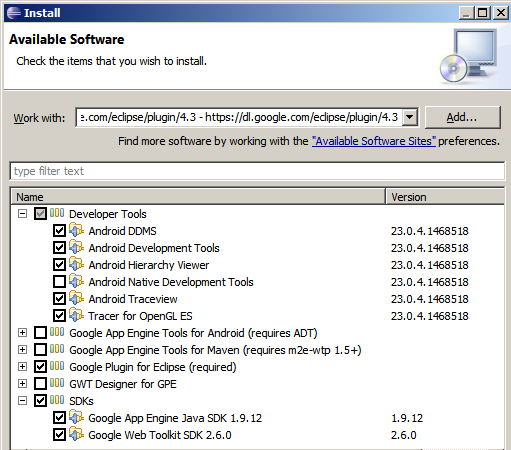

- Download google app engine sdk for java install#
- Download google app engine sdk for java update#
- Download google app engine sdk for java code#
- Download google app engine sdk for java download#
Download google app engine sdk for java update#
Based on the type of the request.So a recent update to the Google App Engine SDK broke my JSF 2.0 web application.

Import class EmployeeResource String getEmployee() ) : indicates which type of content will be produced by the service.

Here a sample class with the JAX-RS annotations: package .rest.impl It is time to create one.Create for example the class ., be sure to use the package name that you have configured in the web.xml for the Jersey servlet, based on the configuration we have made in previous step the package is .rest.impl The project is now ready to contain REST service. The configuration parameter .property.packages is used by Jersey to list the packages where REST services implementation are located.Note that you can put as many package as you need to, you just need to separate the package names by a Ĭreating a simple REST Service to test the environment This servlet that will answer to the /resources/ and /rest/ URL. So you need to modify the web.xml of your application with the following entries: Ĭom.servlet.ServletContainerĬom.impl To do that you need to register a new servlet that is using the Jersey API and configure it to a specific URI (eg: /ressources and/or /rest) and configure what are the Java packages that contain the REST implementation classes. In this step you will register a new URI to handle REST requests. Unfortunately I did not find the way to do it, so if you know it, feel free to post a comment and I will update the article. I would prefer to do that by configuration of the build path, to automatically add the JARs to the WEB-INF/lib directory when executing/deploying the application.

Right click on the project and select menu entry Build Path > Configure Build Path….Configure the web application (web.xml) to handle REST requests.Add the JAX-RS, JAXB Jars in your project and application.To be able to create and run REST services in your application you need to: The server is running at You can access the application, and the sample servlet that has been created using the URL: To stop the server, click on the terminate button in the Eclipse console.Ĭonfiguring the REST support in the application The web server is starting automatically, you should see the following message in the Eclipse console
Download google app engine sdk for java code#
In debug mode you can change source code and test is without restarting the server. I personnaly most of the time run my server using the debug command Run > DebugAs > Web Application. To test that your application has been created correctly select the menu Run > Run As > Web Application. The App Egine SDK, installed with the Eclipse plugin contains a Web server (based on Jetty), that could be used for testing and debugging.
Download google app engine sdk for java install#
Install it using thejava -jar JAXB2_20091104.jar command.JAXB 2.2 Implementation to simplify the marshalling/unmarshalling of the XML, and also facilitate the JSON support.Unzip the file in a directory that we will call $JERSEY_HOME.JAX-RS Reference Implementation, be sure you take the Jersey 1.1.5 release.
Download google app engine sdk for java download#


 0 kommentar(er)
0 kommentar(er)
